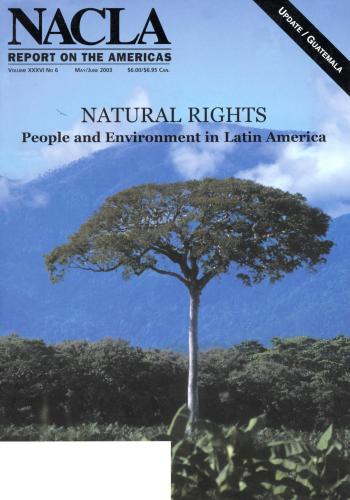Report
The gleaming military installation rises from the patchy forests surrounding Belém, a city of one million people in Brazil’s eastern Amazon Delta. The building’s futuristic design seems out of place amid neighborhoods of wood and brick homes with tin roofs, and rutted alleyways where cattle pace.
On March 4, 2003, the Ecuadoran newspaper Hoy reported that Ecuador’s Ministry of Environment had agreed to allow two transnational companies to cancel their oil concession contracts under the provision of force majeure.
Costa Rica is the poster child for ecotourism. This brand of nature-based tourism, which seeks to be low impact and provide tangible benefits for both the environment and host communities, is widely said to be the fastest growing sector of the tourism industry. And tourism, in turn, rivals oil as the world’s largest industry.
Mention of Peru’s rainforest conjures images of vast, trackless jungle rich in exotic plants and animals. But that image, on which the country’s tourism industry banks, is only half the truth.
As of this writing, the new Brazilian government headed by President Lula da Silva is scarcely two months old. It will require many more assessments before it can be determined just how far its accomplishments match up with its intentions in the environmental area.
The Cessna bush plane takes off from Ocosingo, where the highlands of Chiapas, Mexico slope down to the Lacandon Selva—the jungle. We leave behind paved roads and the electricity grid, heading into the verdant canyonlands of what remains a wild frontier, a stretch of jungle along the Guatemalan border only partly under government control.
A rusted, faded sign arches over the entrance to the town of Unión Hidalgo, in Mexico’s southern state of Oaxaca. The sign tells visitors in Zapotec and Spanish, “Welcome to Gubiña Ranch.”

